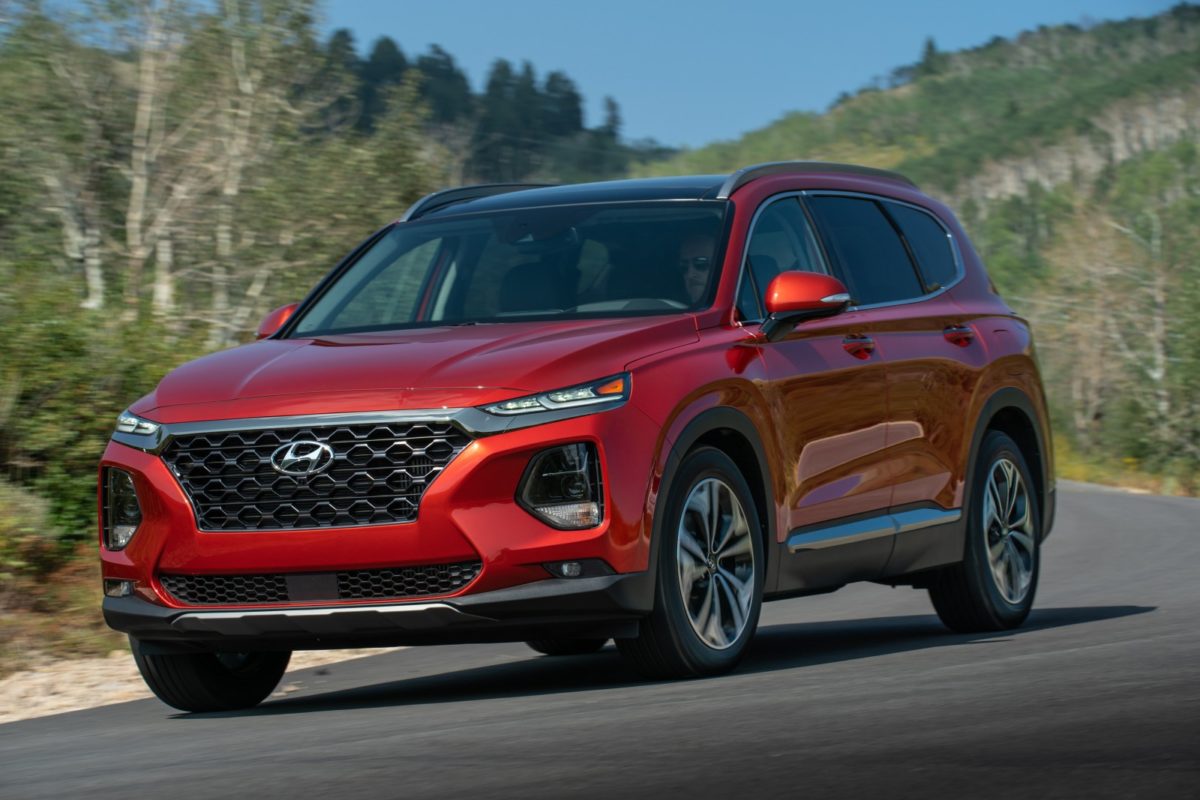Hyundai debuts all-new fourth generation Hyundai Santa Fe


Hyundai is upping its SUV game in a big way with the release of the fourth generation, three-row 2019 Santa Fe. The vehicle embodies the company’s latest design philosophy, increases comfort providing extra head and legroom, and introduces some industry-leading safety tech.

Replacing the familiar slatted hexagonal grille is a new signature “Cascading” offering that has a long centre section flowing down deep into the front bumper, and is made up of 3-D effect mesh. The sharp, skinny headlamps rest atop a chrome garnish stretching across the fascia and below, unique stacked foglight and turn signal units. The back end has a European feel to it featuring a robust pair of taillights and twin tailpipes surrounded by a metallic diffuser.

Drivers will appreciate blind spot reduction thanks to rear quarter glass that is 41 per cent larger than previously. Electric extendable thigh supports built into the front seats reduce fatigue. Behind, second row passenger legroom has grown 38 millimetres, and access to the third row is made easy with the push of a button instantly folding the middle seatbacks forward. In addition, headroom for the latter is now 22 millimetres greater.

Debuting on the Santa Fe is Rear Occupant Alert. Sensors monitor activity and will alert the driver if there are passengers left in the back when leaving the crossover, particularly useful for parents with small children. The function is part of the Hyundai SmartSense suite of accident avoidance and mitigation technologies, which includes blind sport warning, automatic emergency braking and more.
The North American market receives three powertrain options: 2.4-litre naturally aspirated and 2.0-litre turbocharged gasoline engines, as well as a 2.2-litre diesel, something of a rarity in today’s automotive climate.

Helping put the power down is the manufacturer’s proprietary HTRAC system. The amount of torque delivered to each wheel varies depending on factors like vehicle speed and available grip, not only helping improve traction on loose surfaces but also in regular driving conditions. Via user-selectable dynamic modes, the precise torque ratio may be controlled — for example, the Sport setting sends 50 per cent of torque to the rear wheels, Comfort, 35 per cent and Eco prioritizes the front axle for better fuel economy.
Prices start at $29,124.

